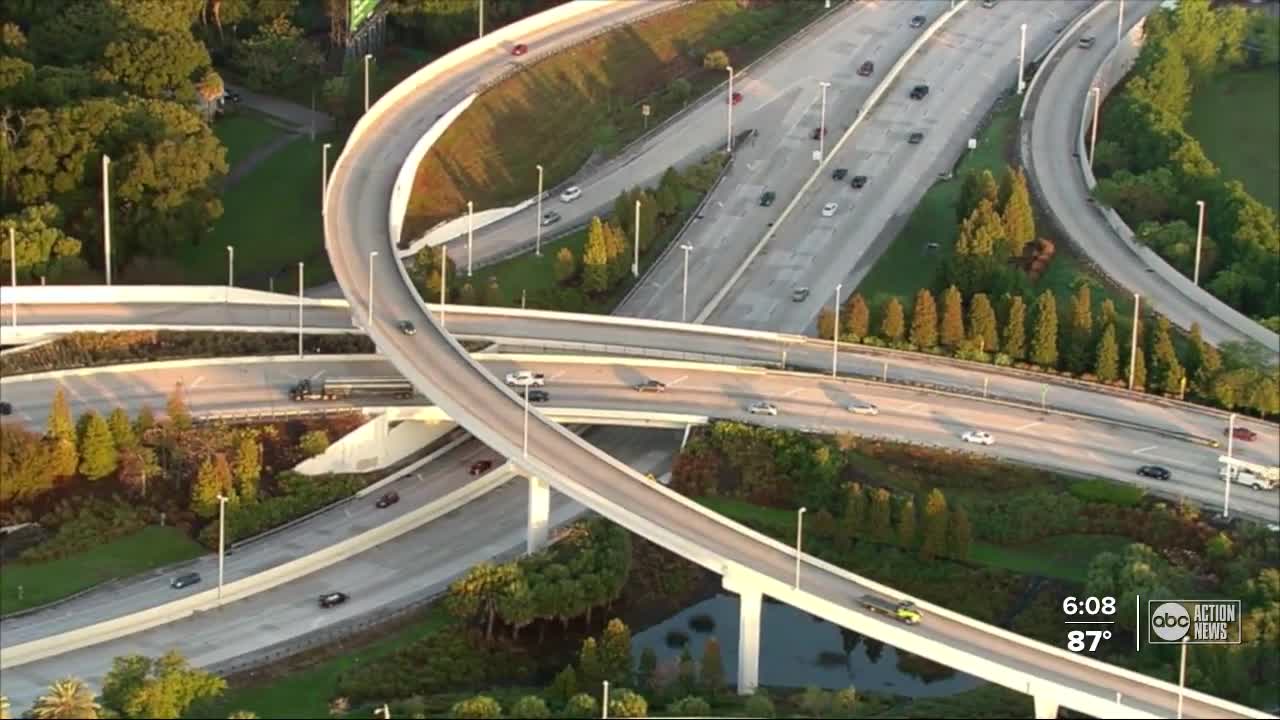TAMPA, Fla. -- Community leaders across Tampa Bay believe many traffic patterns and transportation needs have changed as a result of the COVID-19 pandemic.
As COVID-19 started spreading in Florida, Jodie Jones went from a new job at a cutting-edge printing company to a sudden layoff.
"I had just started that job three weeks prior, so first in, first out," Jones said.
She stopped driving and started job searching. Eventually, she landed a gig working from home, helping process backlogged unemployment claims for the state.
"I didn't go anywhere," Jones said. "I didn't see anyone. The only person I saw was my boyfriend."
Date nights soon turned into backyard campouts.
Jones, along with so many other Floridians, cut driving time as they began working mostly from home, were in self-quarantine, or unfortunately, lost jobs.
"There was a huge traffic shift," said Emily Hinsdale with Walk Bike Tampa. "I think in Hillsborough County at one point, they counted it as much as 68 percent lower car volume on our streets."
According to transportation data firm Inrix, traffic started to decline across the U.S. on March 13. By April, in the height of most state-wide shutdowns, the number of passenger cars on the road dropped by more than 60 percent. Only by the end of June had car travel started to return to pre-COVID-19 numbers, providing huge insight for community transportation leaders.
This rang especially true in low-income neighborhoods like Tampa's Uptown, where many people rely on walking, biking and public transit to get to work.
"Everyone is seeing how much transportation plays a factor in everyday life," said Sarah Combs, CEO of the University Area Community Development Corporation.
In fact, FDOT as already partnered on studies that look at turning part of Fowler Avenue into a boulevard. The Tampa Innovation Partnership says with more people working from home, it's a viable idea to consider in the future.
"I do believe that we're going to begin to see the new normal of the economy," said Mark Sharpe with the Tampa Innovation Partnership. "And that new normal might mean that those of us who don't have to be on the road as much might not be on the road as much."
Hinsdale said many people opted to walk and bike outside to leave their homes during state-wide shutdowns.
Bicycle shops suddenly became hotspots as everyone looked to find new ways to get exercise.
"As somebody who is advocating for using active transportation as your way to get around town and making that a part of your life, it is very exciting to see that many more people experiencing how great it is to be healthy and active outside," Hinsdale said.
Hinsdale said the COVID-19 pandemic is calling attention to the risk of obesity, high blood pressure and other issues that are some of the biggest risk factors when contracting COVID-19.
"This is something that we can take care of. We can get out there and be active and improve our health," Hinsdale said. "There's not much that we can control right now. Being active outside is something that we control."
Jones was eventually put back on the payroll at her job, but she's still finding joy in staying at home in the wake of the pandemic.
Like many Floridian's she decided to improve her home and space by redoing her backyard. She also picked up a new hobby: beekeeping.


